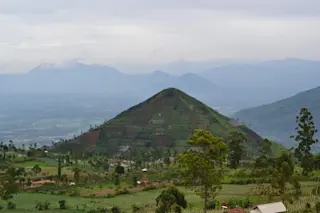Gary Stinchcomb walks into a Paleo-Indian dig site shaded by a canopy of trees in Pennsylvania’s Lehigh Gorge State Park. He weaves past holes dug by looters hunting for pieces of human prehistory: knives, scrapers, projectile points.
At a tarp sheltering a 6-foot-deep pit, he stops and climbs into the hole. On the bottom are large boulders left behind by glaciers some 12,000 years ago. It was around that time that Paleo-Indians arrived in this part of the Lehigh Valley.
Stinchcomb, a geologist at Murray State University in Kentucky, is there looking for traces of a more recent past. He is searching for evidence that Earth has entered the Anthropocene, a new epoch defined by the idea that humans have surpassed nature as the primary shapers of the planet.
Scientists are divided over whether to formally recognize the Anthropocene, or the Human Age, as a bona fide geologic time period. ...















